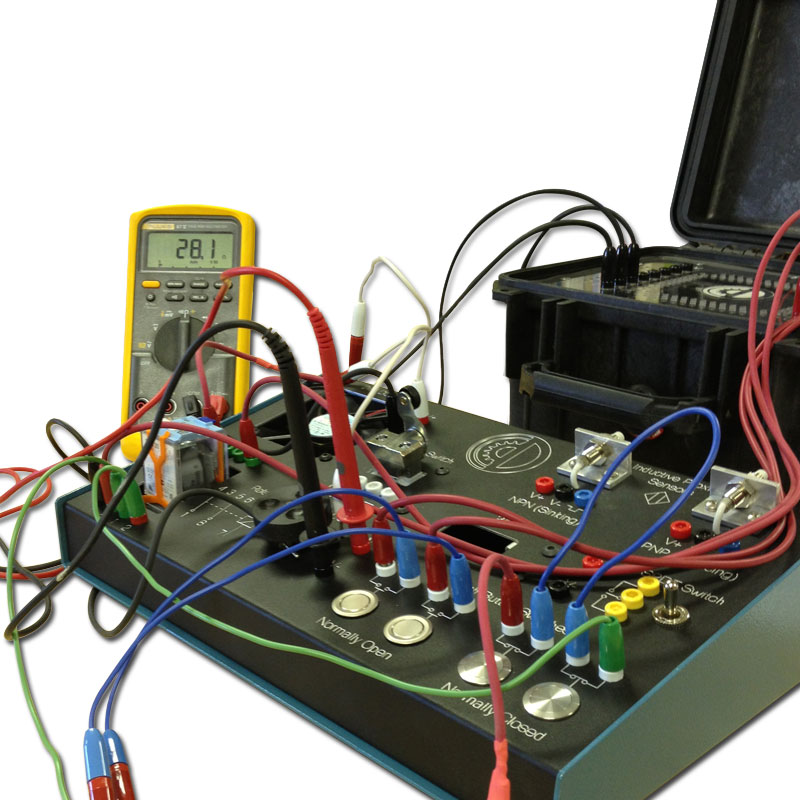Specialized technical support for electrical industry for growth and progress.
Specialized technical support for electrical industry for growth and progress.
Blog Article
Top Tips for Effective Electrical System Troubleshooting
Troubleshooting electrical systems calls for a methodical strategy, grounded in a thorough understanding of electrical principles and safety and security procedures. By acquainting oneself with circuit components, making use of essential tools, and sticking to an organized analysis method, professionals can successfully identify and resolve concerns. The nuances of efficient repairing expand beyond simple technological understanding; comprehending how to document searchings for and focus on safety can considerably influence results. As we discover these important elements further, it comes to be clear that understanding this process is not just advantageous however crucial for success in the field.
Understand the Basics
Understanding the fundamentals of electrical systems is necessary for efficient troubleshooting, as a solid foundation allows professionals to detect and settle concerns more successfully. A detailed understanding of electric concepts, such as voltage, present, resistance, and power, is critical in recognizing the origin of troubles. Voltage is the electric prospective distinction that drives existing via a circuit, while resistance opposes the circulation of existing, impacting the total functionality of the system.
Knowledge with circuit elements, consisting of resistors, capacitors, diodes, and switches, is additionally extremely important. Each component plays a distinctive duty in circuit actions and can affect efficiency when malfunctioning. Furthermore, understanding collection and identical circuit setups is vital, as these setups influence the distribution of voltage and current within the system.
Professionals must be mindful of prospective dangers, such as shock and brief circuits, to carry out secure troubleshooting techniques. By understanding these fundamental principles, specialists boost their capability to perform efficient diagnostics and fixings, eventually leading to boosted performance and integrity of electrical systems (electrical system troubleshooting).
Gather Necessary Devices
Reliable troubleshooting of electrical systems calls for the best set of tools to identify and settle problems properly. A well-appointed technician can substantially enhance efficiency and performance in determining problems. Crucial tools include a multimeter, which determines voltage, existing, and resistance, allowing for exact examinations of electric components. Clamp meters are additionally useful for gauging current without separating the circuit, making sure security and ease.
Furthermore, protected hand devices such as screwdrivers, pliers, and cable pole dancers are critical for safely adjusting electrical links. It is also recommended to have a circuit tester handy to validate the existence of voltage in outlets and cables. For even more complicated systems, a thermal imaging camera can assist spot overheating parts, showing possible failures.

Comply With an Organized Technique
Having collected the proper devices, the next action in troubleshooting electrical systems is to adhere to a methodical technique. A methodical strategy makes certain that service technicians can identify mistakes successfully and properly, decreasing downtime and protecting against unneeded fixings.
Begin by evaluating the system's schematic diagrams and specs. Comprehending the layout and operational criteria will give context for diagnosing concerns. Next off, isolate the problem area by utilizing a process of removal. This involves checking each component systematically, starting from the power resource and working towards the load.
Use screening tools, such as multimeters and oscilloscopes, to collect objective data about voltage, existing, and resistance at various points within the system. This empirical evidence will direct your troubleshooting efforts and help to validate or get rid of prospective root causes of failure.
Furthermore, consider environmental elements that might affect the system's performance, such as temperature level variations or dampness ingress. A thorough examination of electrical wiring, links, and elements will make certain that all opportunities are represented.
Document Your Findings
Thorough documents is vital in the troubleshooting process of electric systems. This method not only aids in understanding the origin reason of the problem but likewise serves as a reference for future fixing initiatives.

Additionally, keeping a log of components replaced or fixings done is vital. This information sustains supply monitoring and can aid analyze the long life and dependability of certain components.
Inevitably, the paperwork procedure need to be detailed yet succinct, enabling simple retrieval and testimonial - electrical system troubleshooting. By focusing on thorough documentation, professionals can produce a valuable Visit Website data base that not just aids in present troubleshooting but also equips future upkeep initiatives, thus boosting overall system integrity

Prioritize Safety Procedures
Acknowledging the intrinsic threats associated with electrical systems is vital for ensuring security throughout troubleshooting. Electric shock, burns, and equipment damage are simply a few of the potential threats that service technicians deal with. Prioritizing precaution is not only a legal commitment but also an ethical necessary that safeguards both the professional and the surrounding environment.
Before commencing any type of troubleshooting task, technicians must wear proper individual safety equipment (PPE), consisting of shielded gloves, shatterproof glass, and flame-resistant clothing. Making certain that the workplace is completely dry and free of clutter can dramatically minimize the risk of accidents. It is vital to de-energize circuits prior to beginning any type of work, validating that they are not live through the usage of a multimeter or voltage tester.
Developing clear interaction methods with staff member is also essential; this makes sure that everybody recognizes possible threats and the condition of the electrical system being serviced. Last but not least, having an emergency reaction strategy in place can prove vital in the occasion of an incident. By focusing on precaution, service technicians can efficiently reduce threats and promote a much safer workplace.
Verdict
Effective electric system troubleshooting depends on a thorough understanding of fundamental principles and about his a systematic method. Prioritizing security actions guarantees the health of individuals involved and the integrity of the electrical system.
Report this page